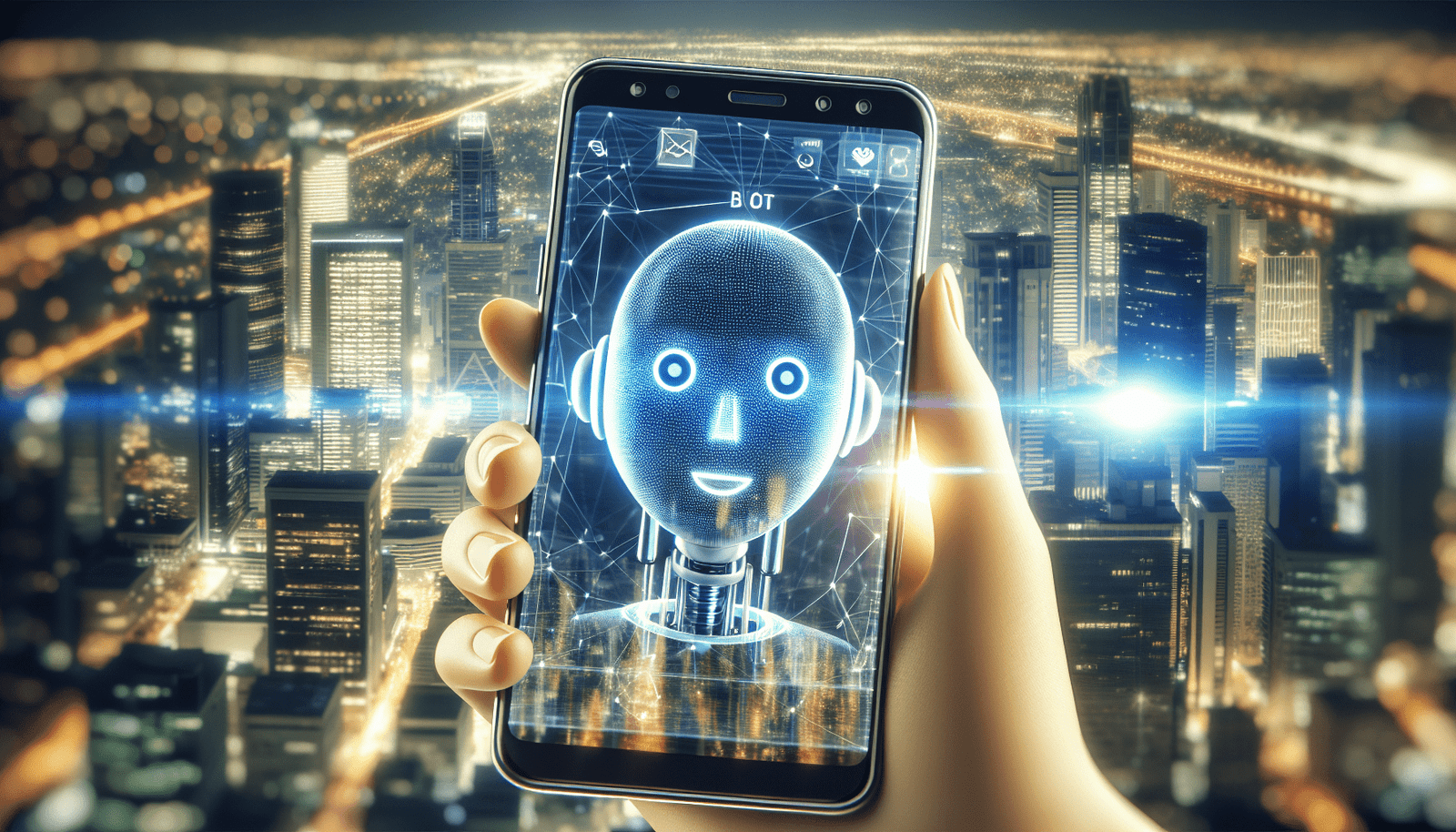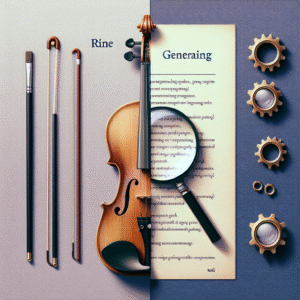Have you ever wondered how customer service will evolve in the coming years? As technology advances, it’s fascinating to think about the role that chatbots will play in shaping our experiences as consumers. Let’s talk about it!
The Rise of Chatbots in Customer Service
I remember when getting help from a company meant waiting on hold, listening to elevator music, and repeating my issue to different representatives. Those days are becoming less common. With the advancement of chatbot technology, we are now in an era where immediate assistance is just a click away.
What Exactly Are Chatbots?
Chatbots are software applications that use artificial intelligence (AI) to simulate human conversation. They can communicate through text or voice, providing users with information, guiding them through processes, or resolving their queries. Essentially, they act like virtual assistants that are available 24/7, helping customers get the assistance they need without the wait.
Different Types of Chatbots
When I think about chatbots, it’s important to recognize that not all are created equal. There are several types of chatbots tailored for different purposes:
-
Rule-Based Chatbots: These follow predefined pathways and can only respond to specific commands or questions. They function like a decision tree, providing limited responses based on user input.
-
AI-Powered Chatbots: Utilizing machine learning and natural language processing, these bots can understand context, learn from interactions, and improve their responses over time. They offer a more dynamic and personal experience.
-
Hybrid Chatbots: Combining both rule-based and AI components, hybrid chatbots can handle straightforward queries while also recognizing when they need to escalate issues to a human agent.
Understanding these types of chatbots can help me appreciate how they can cater to various customer needs, enhancing the overall service experience.
The Benefits of Using Chatbots
It’s exciting to see the numerous advantages chatbots bring to customer service. Here are some key benefits I find particularly noteworthy:
1. Immediate Customer Response
One of the most appealing aspects of chatbots is their ability to provide instant feedback. Whether I have a simple inquiry or a complex issue, they can address my questions without delay, which saves me precious time.
2. Cost Efficiency for Businesses
Businesses can significantly reduce operational costs by implementing chatbot technology. With chatbots handling standard questions, human agents can focus on intricate problems, ultimately allowing companies to allocate their resources more effectively.
3. Consistency in Responses
Another benefit is the consistent and reliable answers chatbots provide. I appreciate the fact that I receive the same information regardless of when I ask a question, which eliminates confusion and builds trust in the brand.
4. Availability Around the Clock
Customer service is no longer limited to business hours. I can reach out for assistance any time of day. This 24/7 availability caters to my schedule and offers a sense of convenience that is hard to beat.
5. Personalized Experiences
AI-powered chatbots can analyze my behavior and preferences. This gives them the ability to provide tailored recommendations based on my past interactions, making the experience feel more personal.
6. Scalability
As a consumer, I find it beneficial that chatbots can handle an influx of inquiries simultaneously. This means businesses can maintain high customer satisfaction levels during peak times, giving me the support I need when I need it.
Challenges Facing Chatbot Technology
While there are countless benefits, it’s also important to address the challenges that come with chatbot technology.
1. Limited Understanding of Context
Despite advancements, chatbots still struggle with complex inquiries that require understanding context. If I ask a nuanced question or use slang, they may misinterpret my request, leading to frustration.
2. Dependence on Pre-Defined Responses
Rule-based chatbots depend heavily on scripts. If my inquiry falls outside of their programming, they may fail to provide a satisfactory answer, which can be a major drawback.
3. Avoiding Over-Reliance on Automation
It’s easy for businesses to over-automate their customer service processes. While chatbots are helpful, human agents play an integral role in providing empathy and understanding—qualities that bots cannot replicate.
4. Privacy and Security Concerns
As with any technology, there are concerns about data privacy and security. I want assurance that my personal information will be protected when I interact with chatbots, and businesses need to prioritize this aspect.
The Future of Chatbot Technology
Looking ahead, I’m optimistic about the future of chatbot technology in customer service. Here are some potential advancements that excite me:
1. Improved AI Capabilities
As machine learning algorithms evolve, chatbots are expected to become more intuitive and effective. I’m looking forward to a time when they can understand my requests fully, leading to smoother interactions.
2. Enhanced Emotional Intelligence
Future chatbots may develop emotional intelligence, allowing them to recognize and respond to my emotional cues. This capability would bridge the gap between human empathy and automated help, creating a more satisfying experience.
3. Multilingual Support
As our world becomes increasingly globalized, I anticipate that chatbots will improve their multilingual capabilities. This would enable businesses to connect with me in my preferred language, fostering understanding and accessibility.
4. Integration with Other Technologies
I envision a future where chatbots seamlessly integrate with other technologies, such as CRM systems or social media platforms. This would enhance their ability to provide personalized experiences by having access to comprehensive data about my interactions.
5. Voice-Activated Chatbots
With the rise of voice assistants, I am eager to see more voice-activated chatbots enter customer service. The convenience of speaking to a bot and getting instant support without typing is an enticing prospect.
The Impact on Customer Experience
It’s clear to me that chatbot technology is setting the stage for an improved customer experience across industries. Here’s how it impacts my interactions as a consumer:
1. Instant Gratification
We live in an age of immediacy, and I crave quick responses. Chatbots grant me the instant gratification I desire, making my interactions smoother and more satisfying.
2. Less Frustration
Long wait times and automated systems can often lead to frustration. With chatbots, I experience reduced waiting times and clearer communication, allowing me to resolve issues more efficiently.
3. Empowerment through Self-Service
Chatbots empower me to find answers on my own. With many resources available, I can search for solutions without having to interact with a representative if I don’t want to.
4. Building Trust in Brands
When I receive reliable and prompt assistance from chatbots, it builds my trust in the brand. Consistent experiences lead me to develop stronger relationships with companies, which can result in brand loyalty.
Real-Life Examples of Chatbot Success
To fully grasp the impact of chatbot technology, let’s take a look at some successful implementations by familiar companies.
1. Sephora
Sephora has incorporated a chatbot on its website and app to assist customers with product recommendations and bookings for in-person consultations. I’ve found it immensely helpful to get personalized product suggestions based on my beauty preferences.
2. Domino’s Pizza
Domino’s allows me to place orders through their chatbot via various platforms, including Facebook Messenger. I find it convenient to accomplish my order through a simple chat interface without navigating complicated menus.
3. H&M
H&M has introduced a chatbot for fashion advice and outfit suggestions. I’ve enjoyed interacting with it to get styling tips tailored to my specific fashion preferences, which makes shopping much more enjoyable.
4. Expedia
Expedia’s chatbot is designed to assist travelers with bookings and itineraries. I’ve experienced how it can quickly provide information about flights, hotels, and even local attractions.
5. Slack
Slack, known for its team collaboration tools, uses chatbots to facilitate communication within teams. Their bots assist members in managing projects, tracking tasks, and even reminding deadlines, which has streamlined team operations for me.
Choosing the Right Chatbot for Customer Service
If I were to consider implementing chatbot technology for customer service, I’d take some essential steps to ensure it aligns with my needs and goals.
1. Determine the Purpose
Understanding what I want to achieve is the first step. Whether it’s answering FAQs, providing personalized recommendations, or guiding users through a process, clearly defining the purpose of the chatbot is crucial.
2. Assess the Target Audience
I should consider who will be using the chatbot. Different demographics may prefer different types of communication. Am I targeting tech-savvy millennials, or do my customers range from older adults to young professionals? This knowledge will help in developing an appropriate communication style and functionality.
3. Choose Between Rule-Based and AI-Powered
Based on my requirements, I can choose between rule-based chatbots for simple queries or AI-powered chatbots for more personalized and complex interactions. Evaluating my business goals will help me make a wise choice.
4. Test and Optimize
Once implemented, I would continuously monitor the chatbot’s performance. Collecting feedback and observing responses will help identify areas for improvement and ensure it meets my evolving needs.
Conclusion
As I reflect on the trajectory of customer service, it’s crystal clear that chatbot technology is shaping a new landscape that emphasizes efficiency, convenience, and enhanced experiences. By embracing this technology, both businesses and consumers can benefit from immediate access to information and personalized assistance.
While challenges remain, the continuous evolution of chatbots promises exciting possibilities. I look forward to a future where customer service feels even more seamless and tailored to my needs. The journey of chatbots is just beginning, and I am eager to see where it leads us next!






